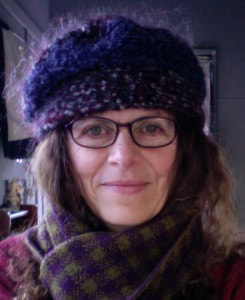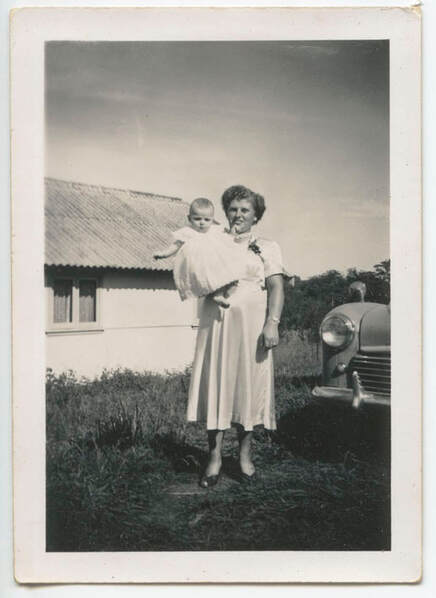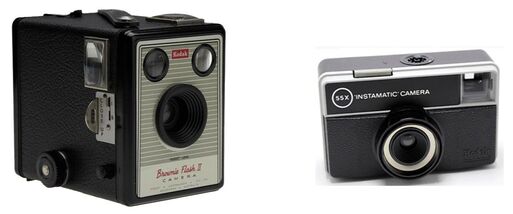|
Background
Dr Bette Mifsud was born on Dharug Country (Western Sydney) in New South Wales, Australia, and raised and worked on family market gardens there between the 1960’s and 1980s. Bette's parents survived the catastrophic bombing of Malta during WWII when it was the most heavily shelled country on the planet for its size. Her parents and two toddler brothers spent six weeks at sea crammed onto a rusty ship with many sick migrants. Her mother was seven month's pregnant at the time. The young family arrived in Sydney in May 1954 and were sponsored and housed by other Maltese immigrants until they found a place of their own. At the age four, Bette discovered a box of black and white family photographs that Mum had brought with her from Malta. It contained portraits of her parents in an utterly foreign landscape. Those younger faces of her parents seemed both familiar and foreign. The box also contained photographs of her grandparents and a large extended Maltese family she had never seen. The photographs enthralled Bette because they had suddenly opened a window onto a world bigger than she had known. They were the first photographs Bette had ever held in her hand. Their value and power, led Bette to take up photography at the age of ten using a Kodak 110 Instamatic camera her Mum had given her. She became hooked on taking pictures of family, market gardens, pets and her local landscape. The exchange of letters and photographs was for migrants an umbilicus connecting them to their distant homeland and families. Bette’s Mum regularly photographed her growing family (using a Kodak Box Brownie) and sent the photographs to her parents back home carefully folded into her beautifully handwritten letters. In return, Bette’s Mum would receive much anticipated letters containing more treasured photographs. Bette studied, lived and worked in Sydney from 1981 until 1995. From 1985 to 2006, she worked as an artist, and educator. Bette also worked as assistant curator and administrator at The Australian Centre for Photography, Artspace Sydney, The Tin Sheds Gallery, Belvoir Street Theatre and The City of Sydney Sculpture Walk. In 1995, Bette moved to Dharug and Gundungurra Country (Blue Mountains World Heritage Area) in New South Wales, Australia and continued to work as an artist and educator. She has lived in the Blue Mountains with partner, novelist, Trevor Shearston, since then. Their son, Corin Shearston, was born in 1997. Their home has studios, a wood workshop, a vegetable garden, orchard and a large native garden. A snapshot of Bette and Mum, sent to Grandma Elizabetta, in Malta.
|
Education
In 1985, Bette graduated with a Bachelor of Visual Arts from Sydney College of the Arts, majoring in photography and painting. (In 1984, as treasurer of the student union, Bette organised, with Cecily Cheo, the very first and highly successful graduation exhibition of visual arts students from Sydney College of the Arts in 1984.) 1996, Bette graduated with a Master of Fine Arts with First Class Honours from the University of New South Wales, majoring in photo-media and multimedia installations. In 2012, she graduated with a Doctorate of Creative Arts from the Western Sydney University, majoring in ecological art. Her research included indigenous ecologies, sacred architecture, eco-psychology, social ecology, landscape painting and photography, garden design, environmental and public art. Her doctoral exegesis is entitled, Coming to Ground: the Work of Art in Ecohumanism Art
Bette Mifsud’s artwork stems from the photograph's relationships with the past and how those relationships resonate with human psyche in the present. She states, “photographs are like fragments of the past, and remnants of a larger ungraspable and ever-changing living world”. Bette’s practice, has engaged with photography’s inherent dualities: negative-positive images, realism-illusion, light-shadow, the seen-unseen. Her practice extends into photography’s relationships with painting, life and death, identity and recognition, time and continuity. Bette’s practice includes, photo-media, landscape and portraiture, multimedia installation, painting, sculpture, video and ecological art. Career Highlights and Awards Bette Mifsud has exhibited in numerous solo and group exhibitions, including in Amsterdam, Berlin, Malta, Tokyo, and other countries. In 1989, Bette was awarded the Australia Council for the Arts’ Tokyo studio residency. She spent the first six months of 1990 in Tokyo. While there, Fuji Film I&I sponsored her major work Mute, a cutting edge installation of giant suspended colour photographic film transparencies. Later that year Mute was exhibited for three months as a solo exhibition at the Art Gallery of New South Wales. Bette's numerous group exhibitions include, the Lady Fairfax Prize for Photography, Australian Perspecta 1991, Citigroup Private Bank Australian Photographic Portrait Award; National Photographic Portrait Prize, Olive Cotton Photographic Portrait Award (twice) and the Hazelhurst Award for Art on Paper. As well as the Tokyo studio, Bette received four grants from The Australia Council for the Arts, and a Project Grant from the Australian Network for Art and Technology. In 2002, she was awarded a New South Wales Ministry for the Arts Inaugural Western Sydney Artist Fellowship. In 2003, she won the Hazelhurst Art Award Major Prize. In 2006, she was awarded an Australian Postgraduate Award from the Western Sydney University. Bette’s artworks are held in private, corporate and public collections in Australia and overseas. |



